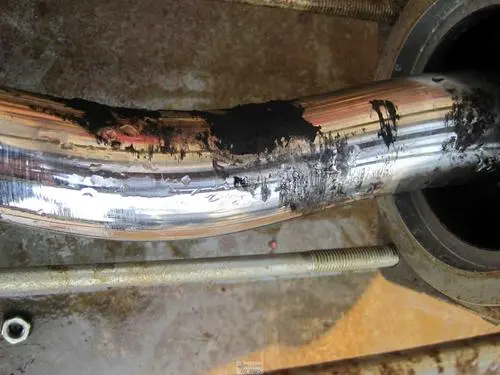Analysis of the causes of stator wear of G-type single screw pump
Causes of stator wear of G-type single screw pump
1. Abrasive wear: divided into dry abrasive wear and wet abrasive wear. Wet abrasive wear means that there is a liquid medium between the abrasive grains and rubber; dry abrasive wear means that there is no liquid medium between the abrasive grains and rubber. Under normal working conditions of the screw pump, wet abrasive wear is one of the main forms of wear of the screw pump.
2. Erosion wear: Also called erosion wear, this is caused by the liquid flow between the rotor and stator of the G-type screw pump. Under normal working conditions of the pump, this is also one of the main forms of wear of the G-type screw pump.
3. Fatigue wear: It occurs when the friction and contact stress between the stator rubber and the blunt dual surface on the rotor are not too large. This is a low-intensity wear compared to abrasive wear. Since this kind of wear is similar to abrasive wear in many aspects, some scholars regard it as a form of abrasive wear, that is, round and blunt abrasive wear.
4. Friction and wear: It only occurs when the friction factor is very large and the tear strength of the rubber is very low. When this kind of wear occurs, the rubber surface is torn, curled, stretched, and peeled off from the rubber surface, forming curled rubber crumbs. When the screw pump is in dry friction, the rotor and the stator generate friction and heat, which increases the temperature of the rubber, reduces the tear strength of the rubber, and causes the resin on the surface of the rubber to age and become sticky, thereby intensifying friction and wear and causing rapid damage to the stator.

The above four wear forms often occur at the same time, but under different working conditions, certain wear forms dominate. When the G-type screw pump works under normal working conditions, wet abrasive wear and erosion wear are the main causes. Fatigue wear also exists, but its wear intensity is very low. In the dry friction state or high temperature state of the screw pump, friction and wear are the main causes. Therefore, a reasonable screw pump structure should be designed according to the laws of rubber abrasive wear, erosion wear, and fatigue wear to minimize the wear rate of the stator and extend its service life.




